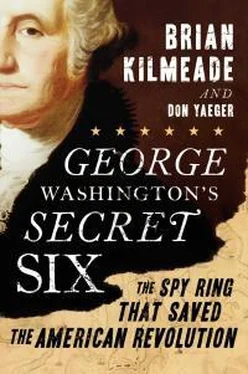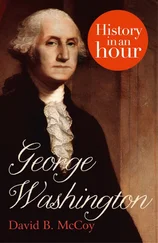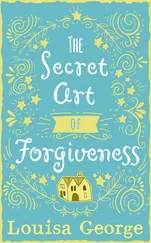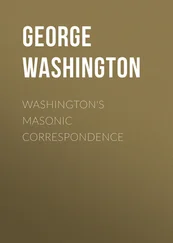To Bob Barnett, who believed in the project so much that he wisely navigated us to the Sentinel imprint of the Penguin Group to see it through—thank you. We are in awe of his perpetually sunny, upbeat approach to life and humbled by his loyalty to us even as he handles the most famous and powerful people in the world.
Don and I were truly thrilled and moved to know that Adrian Zackheim, president and publisher of Sentinel, would be editing the book, and it flowered under his skilled eye. And what can we say about Bria Sandford that would be sufficient thanks for her role, except that she is a true professional in every way, thrives on making deadlines happen, is endlessly patient, and is extremely bright? To say that she was kind of important to this project would be like saying that LeBron James is kind of important to the Miami Heat.
Over the twenty-plus years that I have spent learning about this story, many passionate people and organizations have shared with me their hard-earned knowledge and research of the ring and these historical figures. I fear I might leave someone out, but here it goes nonetheless.
Steve Russell Boerner of the East Hampton Library Long Island Collection offered patience and insight that were critical in so many ways to the success of the book. Gina Piastuck and Frank Sorrentino from the collection brought Morton Pennypacker back to life, and thanks to Frank’s rapid translation of the Woodhull-Townsend logs, we were able to break much new ground on this story. Thanks to Andrea Meyer and John Burke for thier work on Agent 355. And the good people at Black Rock history in Connecticut were a great resource for our Caleb Brewster research.
The invaluable John Tsunis not only gave us a conference room at his Holiday Inn to hold a major secret six summit with historians from around Long Island but also introduced me to Gloria Rocchio and the Ward Melville Heritage Organization. Gloria shed light on many aspects of this story and has been a stalwart in supporting the legacy of the ring and preserving Long Island history. She has been not only a great help but also a great friend. Michael Colucci and Deborah Boudreau, also part of the Ward Melville group, were a tremendous source of assistance and encouragement.
We could not have seen this project through without the cooperation and help of the people of the Raynham Hall Museum in Oyster Bay. Claire Bellerjeau, Townsend family historian, is one of the most knowledgeable people you will meet on the era and the ring; her knowledge and enthusiasm were essential in making Robert Townsend and the rest of his family come alive on these pages. Collections manager Nicole Menchise and executive director Harriet Gerard Clark could not have been more helpful or insightful. They allowed us to walk the house as Robert Townsend did centuries ago, fueling our motivation to spread this story to millions more.
I could not imagine carrying out this project without Barbara Russell, town of Brookhaven historian. She not only educated me about the Setauket spies of 1780 but also brought me to the locations as they stand today. Elizabeth Kahn Kaplan helped me not only with the story but also, as curator of the Three Village Historical Society’s exhibit, got my family excited with her tremendous knowledge and passion. If you truly want to understand how special this revolutionary spy story is, just spend a few minutes with Bev Tyler. He has an awe-inspiring depth of knowledge on the topic and played a key role in acquiring many of the sketches and maps you see in the book.
Special thanks are due, too, to Matt Arthur, Living History Program coordinator at Tryon Palace Historic Sites and Gardens in New Bern, North Carolina, and to Rebecca Reimer Arthur, lecturer in history at Liberty University, for sharing their tremendous knowledge of the era and genealogical investigations during the early stages of writing this book.
If there was one trip that galvanized our belief that this was a book that should be written, it was the journey we took to CIA Headquarters in Langley, Virginia. When we heard the CIA’s historians and agents talk so movingly about the success of this ring and its methods, we knew that our interest and awe were justified. At their request I will not list their names, but I would like to acknowledge the CIA Office of Public Affairs and the CIA’s historical staff.
Finally, I’d like to thank the CIA Officers Memorial Foundation (www.ciamemorialfoundation.org), the Armed Forces Foundation (www.armedforcesfoundation.org), and the Wounded Warrior Project (www.woundedwarriorproject.org) for their support for today’s generation of fighters and spies, which needs support more than ever before.
SELECTED SOURCES
Allen, Thomas B., and Cheryl Harness. George Washington, Spymaster: How America Outspied the British and Won the Revolutionary War . Washington, D.C.: National Geographic, 2004.
A highly accessible book, this is a great starting point for adults and older children alike who are interested in the spying activities under Washington’s command during the Revolution. It is the result of solid research and offers a good overview of espionage activities throughout the war.
Bakeless, John Edwin. Turncoats, Traitors, and Heroes . New York: Da Capo, 1998.
This work provides a look at the unfortunate incident of Nathan Hale, the saga of Benedict Arnold’s treachery, and many other covert operations in the American theater during the war, including the incredible adventure of John Champe and his attempt to kidnap Arnold back for the Patriots.
Baker, William S. “Itinerary of General Washington from June 15, 1775, to December 23, 1783.” The Pennsylvania Magazine of History and Biography 15, no. 1 (1891): 41–87. http://jstor.org.
Crary, Catherine Snell. “The Tory and the Spy: The Double Life of James Rivington,” The William and Mary Quarterly , 3rd ser., 16, no. 1 (January 1959): 61–72. Accessed online March 22, 2013.
This article pulls together a number of primary sources that shed light on Rivington’s spying activities, including his contribution to the victory at Yorktown, that were previously discounted as apocryphal, and therefore unreliable, by many historians.
Fernow, Brian, ed. Documents Relating to the Colonial History of the State of New York . Vol. 15. State Archives, vol. 1. Albany, NY: Weed, Parsons and Company, 1887.
“George Washington and the Culper Spy Ring.” Stony Brook University Libraries. http://guides.library.stonybrook.edu/culper-spy-ring.
Kerber, Linda K. Women of the Republic: Intellect and Ideology in Revolutionary America. Chapel Hill: University of North Carolina Press, 1997.
Macy, Harry, Jr. “Robert Townsend, Jr., of New York City.” The New York Genealogical and Biographical Record 126 (1995): 25–34, 108–12, 192–98.
Perhaps more than any other single source, this article shed light on the physical appearance and relationships of the Townsend family and also offered an in-depth look at Robert Townsend and his interaction with the child named Robert Townsend Jr. after the war.
Nagy, John A. Invisible Ink: Spycraft of the American Revolution . Yardley, PA: Westholme, 2010.
Nagy has compiled a searching and fascinating examination of various techniques used by spies throughout the American colonies and abroad to communicate covertly. His exploration of the history of invisible ink prior to the Culper stain’s development by Sir James Jay, as well as the use of that particular formula, was tremendously helpful for this book.
———. Spies in the Continental Capital: Espionage Across Pennsylvania During the American Revolution . Yardley, PA: Westholme, 2011.
Читать дальше












